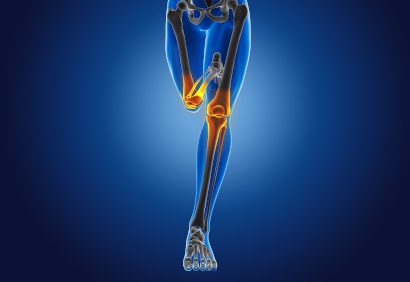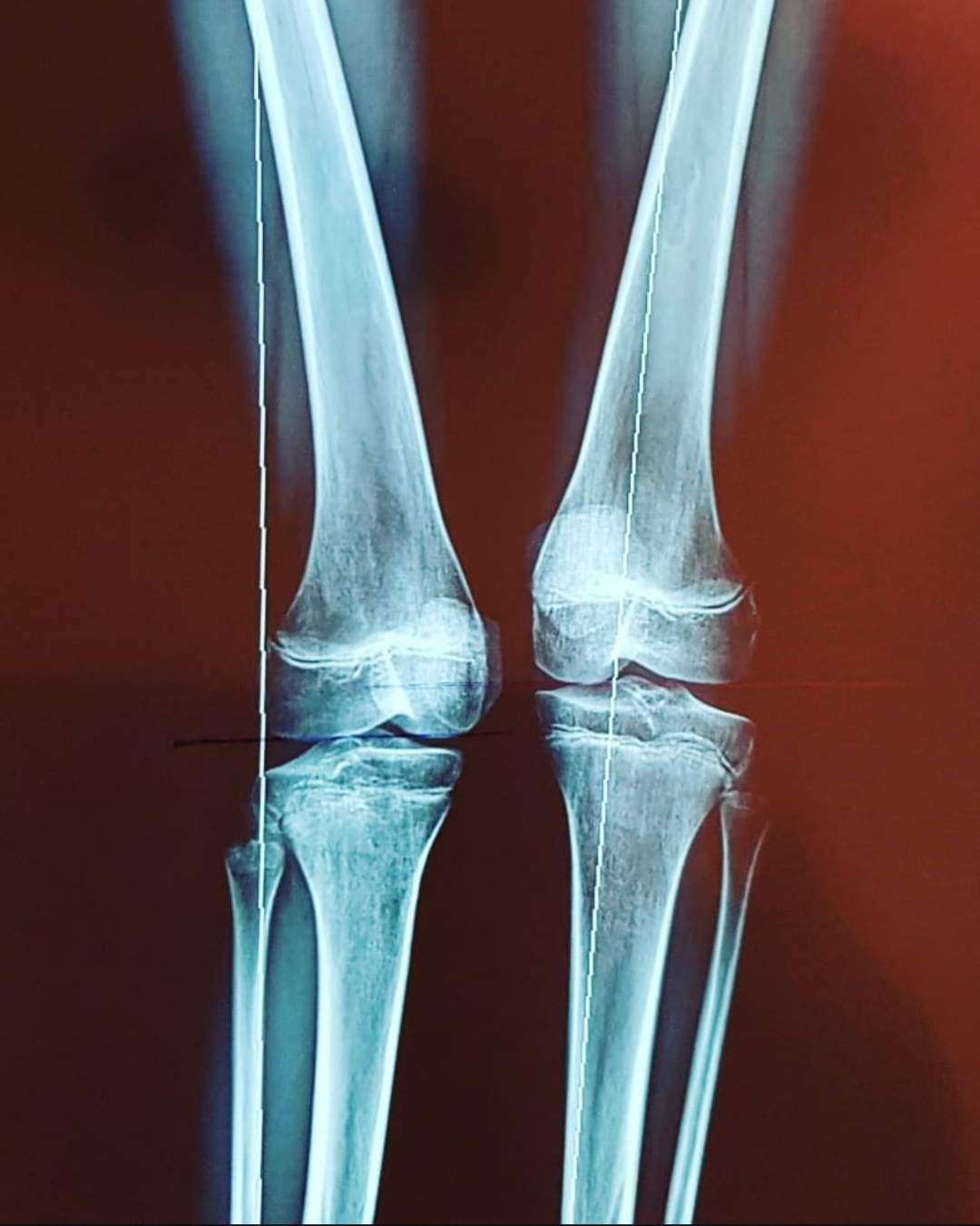Jump To:
Fast Facts
- Approximate Length of Stay: 2 Weeks
- Hospital Stay: 2-4 Days
- Operation Duration: 2-4 Hours
- Postoperative Care: Physiotherapy

Total Knee Replacement (Total Knee Arthroplasty)
“Total Knee Replacement” (TKR), also known as “Total Knee Arthroplasty” (TKA), is a surgical procedure in which a damaged knee joint is replaced with an artificial joint, or prosthesis. This procedure is commonly recommended for individuals with severe knee pain and disability due to conditions such as osteoarthritis, rheumatoid arthritis, or traumatic injury.
Indications for Total Knee Replacement
- Osteoarthritis: The most common reason for TKR, where the cartilage in the knee joint wears away, causing pain, stiffness, and decreased mobility.
- Rheumatoid Arthritis: An autoimmune condition that causes chronic inflammation in the joints, leading to pain and joint damage.
- Post-Traumatic Arthritis: Arthritis that develops after a knee injury, leading to joint pain and deformity.
- Other Causes: Knee deformities, avascular necrosis, or failed previous knee surgeries.
Procedure Overview
-
Preoperative Evaluation
-
-
- Assessment: A thorough evaluation including physical examination, imaging studies (like X-rays or MRIs), and blood tests is conducted.
- Preparation: Patients may undergo preoperative physical therapy, adjust medications, and prepare their home for post-surgical recovery.
-
-
Surgical Procedure
-
-
- Anesthesia: The surgery is performed under general anesthesia or spinal/epidural anesthesia.
- Incision: A vertical incision is made on the front of the knee to access the joint.
- Removal of Damaged Tissue: The surgeon removes the damaged cartilage and a small amount of bone from the surface of the femur (thigh bone), tibia (shin bone), and sometimes the patella (kneecap).
- Implantation of Prosthesis:
- Femoral Component: A metal cap is placed on the end of the femur.
- Tibial Component: A metal and plastic spacer is placed on the top of the tibia to create a smooth gliding surface.
- Patellar Component: In some cases, the underside of the patella is also resurfaced with a plastic component.
- Alignment and Stability: The components are aligned and fixed in place, usually with bone cement, to ensure stability and proper movement.
- Closure: The incision is closed with sutures or staples, and a bandage is applied.
-
-
Types of Prostheses
-
- Cemented vs. Cementless: Cemented prostheses are fixed with bone cement, while cementless rely on bone growth into the surface for fixation.
- Material: The components are typically made of metal (like cobalt-chromium or titanium) and polyethylene (a durable plastic).
Recovery and Rehabilitation
- Hospital Stay: Patients usually stay in the hospital for 2 to 3 days post-surgery.
- Pain Management: Pain is managed with medications, and physical therapy starts soon after surgery.
- Physical Therapy:
- Early Mobilization: Early movement is encouraged to prevent stiffness and improve blood flow.
- Strength and Flexibility Exercises: These exercises are crucial for restoring knee function and strength.
- Mobility Aids: Crutches, walkers, or canes are often used initially.
- Return to Activities: Most patients can resume daily activities within 6 weeks, though full recovery can take 3 to 6 months. High-impact activities may be restricted to prolong the life of the implant.
Risks and Complications
- Infection: Although rare, infections can occur and may require additional treatment or surgery.
- Blood Clots: Patients are often given blood thinners to reduce the risk of deep vein thrombosis (DVT).
- Knee Stiffness: Some patients may experience stiffness that requires additional physical therapy or, in some cases, manipulation under anesthesia.
- Implant Loosening or Wear: Over time, the artificial joint may wear out or loosen, which might necessitate revision surgery.
- Nerve or Blood Vessel Injury: Though rare, there’s a risk of injury to the nerves or blood vessels around the knee.
Longevity and Outcomes
- Durability: Modern knee replacements are designed to last 15 to 20 years or more, depending on factors like patient activity level and weight.
- Improvement in Quality of Life: Most patients experience significant pain relief, improved mobility, and a better quality of life after TKR.
- Revision Surgery: Over time, especially in younger or more active patients, revision surgery may be needed if the implant wears out.
Considerations
- Age and Activity Level: Younger patients may require revision surgery later in life due to implant wear.
- Surgeon Experience: Choosing an experienced orthopedic surgeon is crucial for optimal results.
- Pre-Surgical Fitness: Being in good physical condition before surgery can aid in recovery and outcomes.
“Total Knee Replacement” is a highly effective procedure for those with severe knee joint damage, providing significant pain relief and improved mobility. With proper care and rehabilitation, most patients can return to an active and fulfilling lifestyle after surgery.SHIFA helps you achieve the best possible results from your surgery by utilizing the services of expert orthopedic surgeons.
Compare Before and After Images


Total Knee Replacement (Total Knee Arthroplasty)
Frequently Asked
Questions
Is Knee Replacement Surgery painful?
You’ll feel pain from the surgery itself and pain as your body begins to heal. Your surgeon will suggest a combination of prescription pain medication, over-the-counter nonsteroidal anti-inflammatory drugs (NSAIDs) (if it’s safe for you to take them) and acetaminophen to relieve your pain.
Can I walk after Knee Replacement Surgery?
Yes, you can walk after knee replacement surgery, and walking is an important part of the recovery process
According to studies, commencing walking within 24 hours after knee replacement enables earlier hospital discharge, better functioning of knee implant and lower risks of complications.
Do we need physiotherapy after Orthopedic Surgeries?
Following your surgery physiotherapy is just as important and will help to restore the movement of your hip or knee and strengthen the surrounding muscles. Strengthening your muscles not only helps with movement, but it will also protect your joint against future injury.
Why choose SHIFA for Orthopedic Surgery?
By using the best orthopedic specialists, SHIFA provides all your surgical needs, including neck, hand, hip, and foot surgeries, etc. Also, all post-operative care needs, such as physiotherapy and high-quality rehabilitation, will be provided to you by SHIFA in the shortest possible time.
SHIFA's Departments
Related Services
Featured Services

Oral and Maxillofacial Surgery
“Oral and Maxillofacial Surgery” (OMFS) is a specialized field of surgery focused on the diagnosis, surgical treatment, and management of

PRP Facial Fejuvenation
“PRP (Platelet-Rich Plasma) Facial Rejuvenation”, also known as the “vampire facial,” is a cosmetic procedure that uses the patient’s own

Glasses Removal Procedures
“Glass Removal Procedures”, commonly known as “Refractive Surgery”, aim to correct vision problems like “Myopia” (nearsightedness), “Hyperopia” (farsightedness), and “Astigmatism”.

Restorative and Cosmetic Dentistry
“Restorative and Cosmetic Dentistry” are two branches of dental care that focus on improving the appearance, function, and overall health
Our Blog Articles
- mehdi.mhj@gmail.com
Benefits of Consulting With an Online Doctor
Uncover strategies to achieve a harmonious balance between professional and personal well-being....
Read More- mehdi.mhj@gmail.com
What are the benefits of online doctor booking
Explore importance of quality sleep & learn tips to improve your sleep, ensuring raise-up refreshed...
Read More- mehdi.mhj@gmail.com
Doccure – Making your clinic painless visit?
Explore the benefits & challenges of virtual healthcare appointments, along with tips for making good...
Read More- mehdi.mhj@gmail.com
5 Great reasons to use an online doctor to choose
Delve into the impact of digital life on mental health & discover practical strategies to...
Read More





Comments are closed.